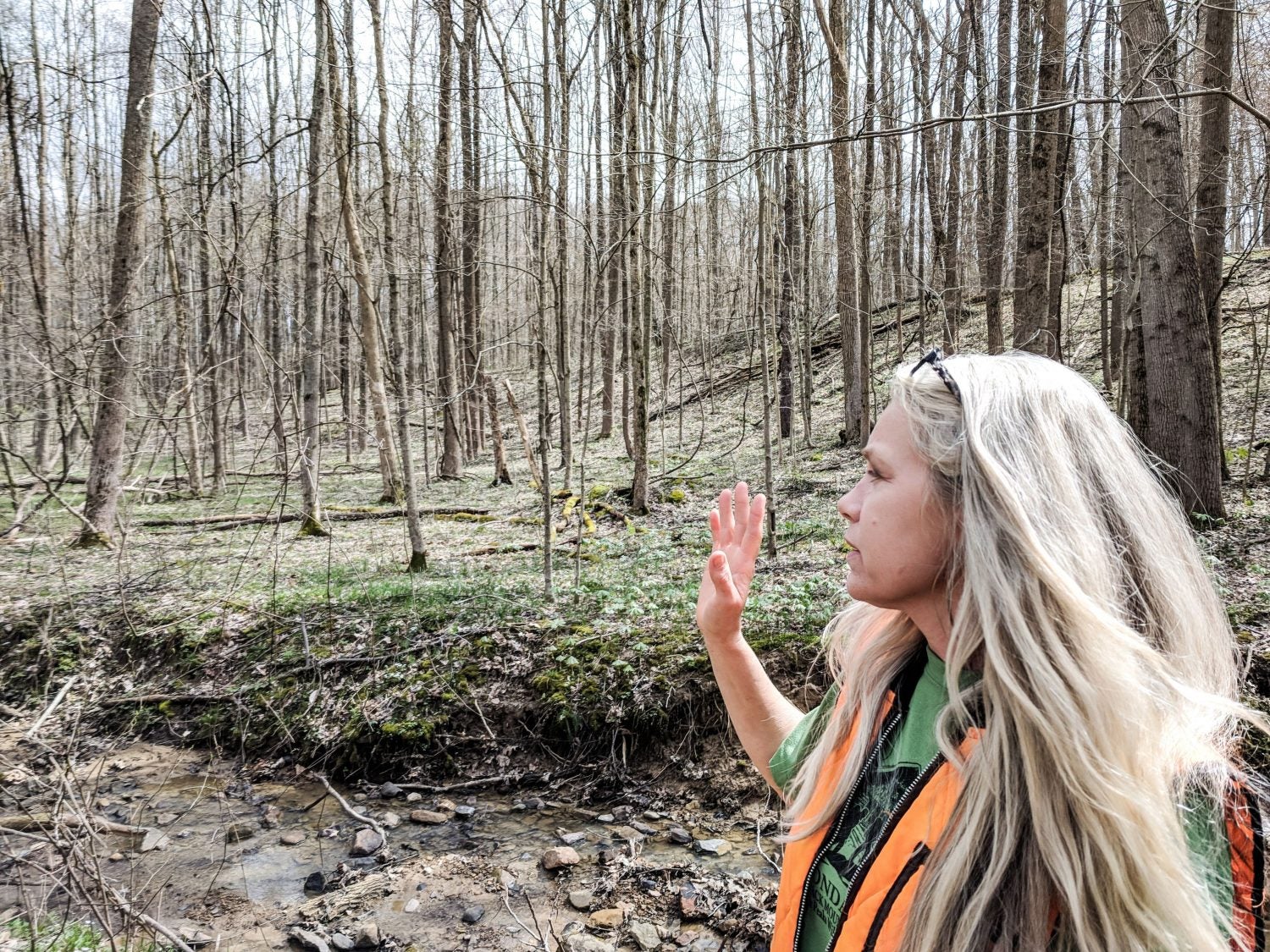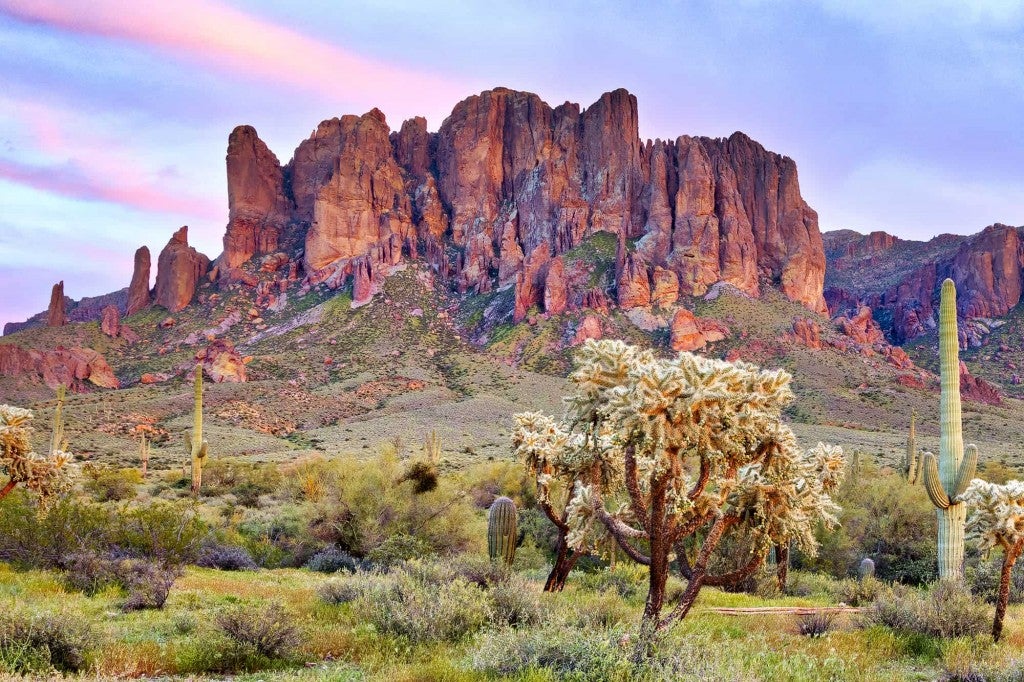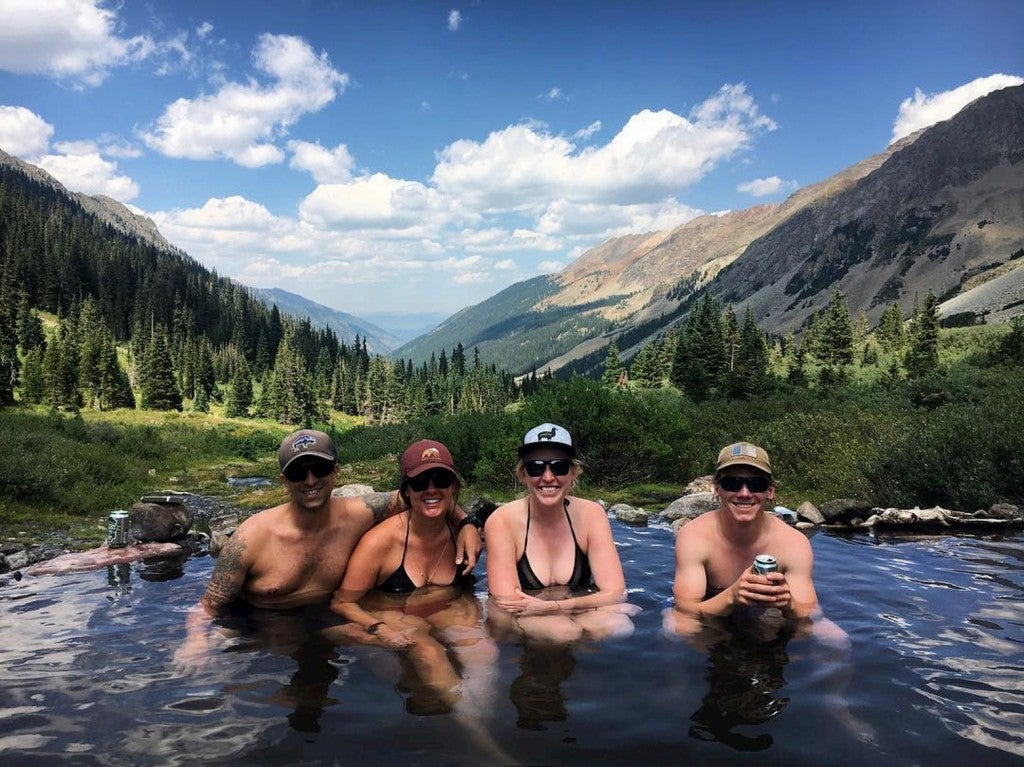Campers, have you tried mushroom hunting? The Dyrt writer Meghan O’Dea recently traveled to Ohio to learn all about this thrilling way to connect with nature.
Disclaimer: Consuming foraged mushrooms can be risky (poisonous mushrooms). Only those who are well-educated on foraging and mushroom varieties should attempt to do so. Please note that this is one writer’s experience and should not be taken as expert advice.
Introducing Our Expert Hunter
Naturalist and mushroom hunting expert Andrea Moore is easy to spot amongst the grey pines and beeches. Her long, silvery hair and bright orange hunter’s vest catch your eye as she heads confidently off the deer-worn trails.
Andrea knows what she’s aiming for — hidden caches of morel mushrooms, spicy cutleaf toothwort, and pungent ramps. “I walk about 300 miles in a season and there are days I don’t find anything,” explains Moore. But that’s time well spent getting to know every tree, every root, and every bramble.
Lately, though, she’s gotten lucky. She’s carrying a net bag full of the morels she picked yesterday. If a tree is one of the species morels favor like elm, ash, or sycamore trees, a crop could appear.
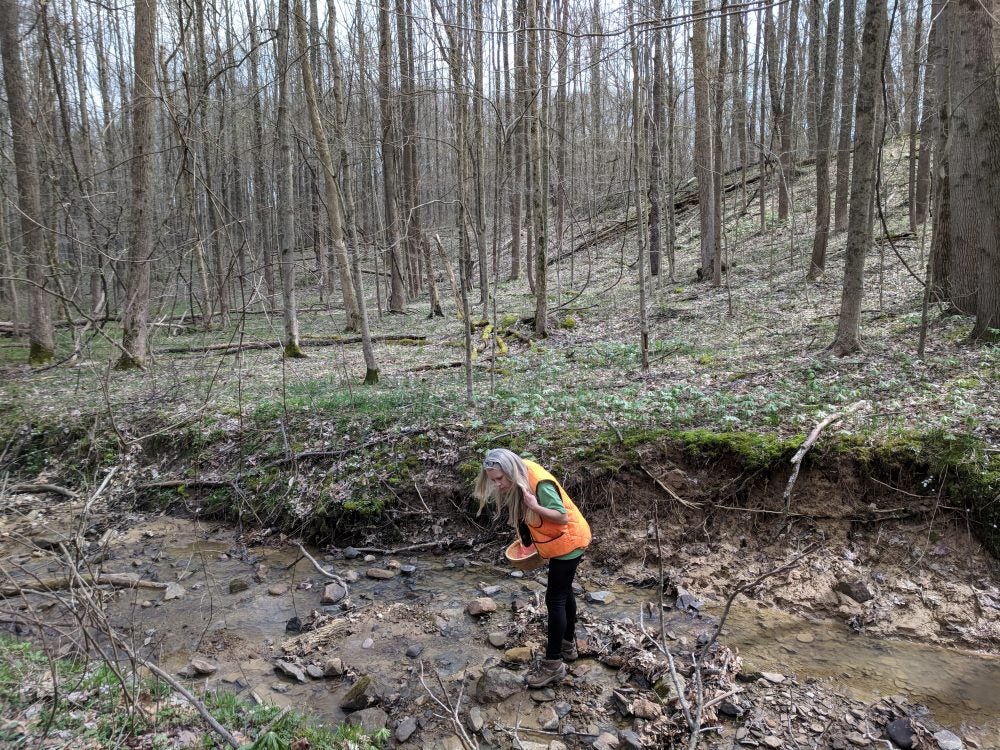
Moore crosses creek bed while giving a tour of her property in Ohio.
My Mushroom Hunting Experience
It’s not my first time mushroom hunting, but it is my first time with an actual mycologist.
Andrea Moore is a member of the Ohio Mushroom Society. She’s also an expert on not only tasty fungi but also the forests of Hocking County, Ohio.
She’s taking us around her property, where it’s legal to pick whatever we find. Most of her time outside is spent at Clear Creek Metro Park. There you can find her dressed in her ranger uniform instead of an orange vest.
We finally find morels peeking out of the duff by a dying fruit tree. She hands over a wood-handled knife.
Cutting the mushrooms, rather than picking them, preserves the underground system the mushrooms sprout from. This helps the mycological colony continue to fruit. She takes the same approach when we kneel down by a fragrant patch of wild ramps. Where she carefully digs up only a few with a trowel, leaving the rest to live their quiet, wild lives.
Moore emphasizes the importance of sustainable foraging. This means disturbing these rare plants as little as possible and taking only what you need for the dinner table. It helps that wild mushrooms pack such intense amounts of rich, umami flavor in such small packages.
Later, in Andrea’s kitchen, she shows us the big canisters of dried mushrooms she harvested last season. She’s been rehydrating handfuls and dropping them into her Alfredo sauce all winter long.
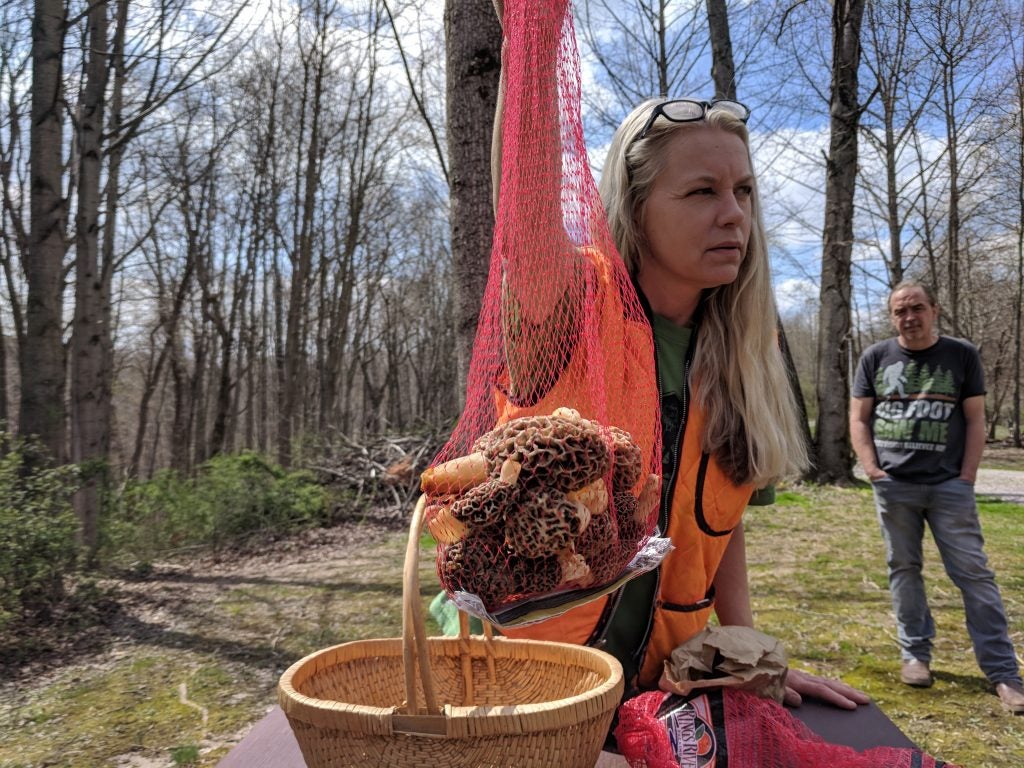
Moore holds up a cache of morels in a net bag, which lets her redistribute spores while she’s hiking.
Mushroom Hunting for Beginners: What You Need to Know
First, you need to know where to go. Rules vary widely about where you can and can’t legally forage. Most national parks, for example, have rules that prohibit removing plants. Though in some instances individual park supervisors have leeway in setting and enforcing the specifics of that policy.
Many State Parks have provisions that allow picking certain types of edible mushrooms “for personal consumption”.
In Ohio, for example, you can forage in state forests, the state’s wildlife management area, and the Wayne National Forest. However, you’ll want to get in touch with your local parks to find out the specific rules they have. It can really vary depending on who’s in charge and what laws are on the books.
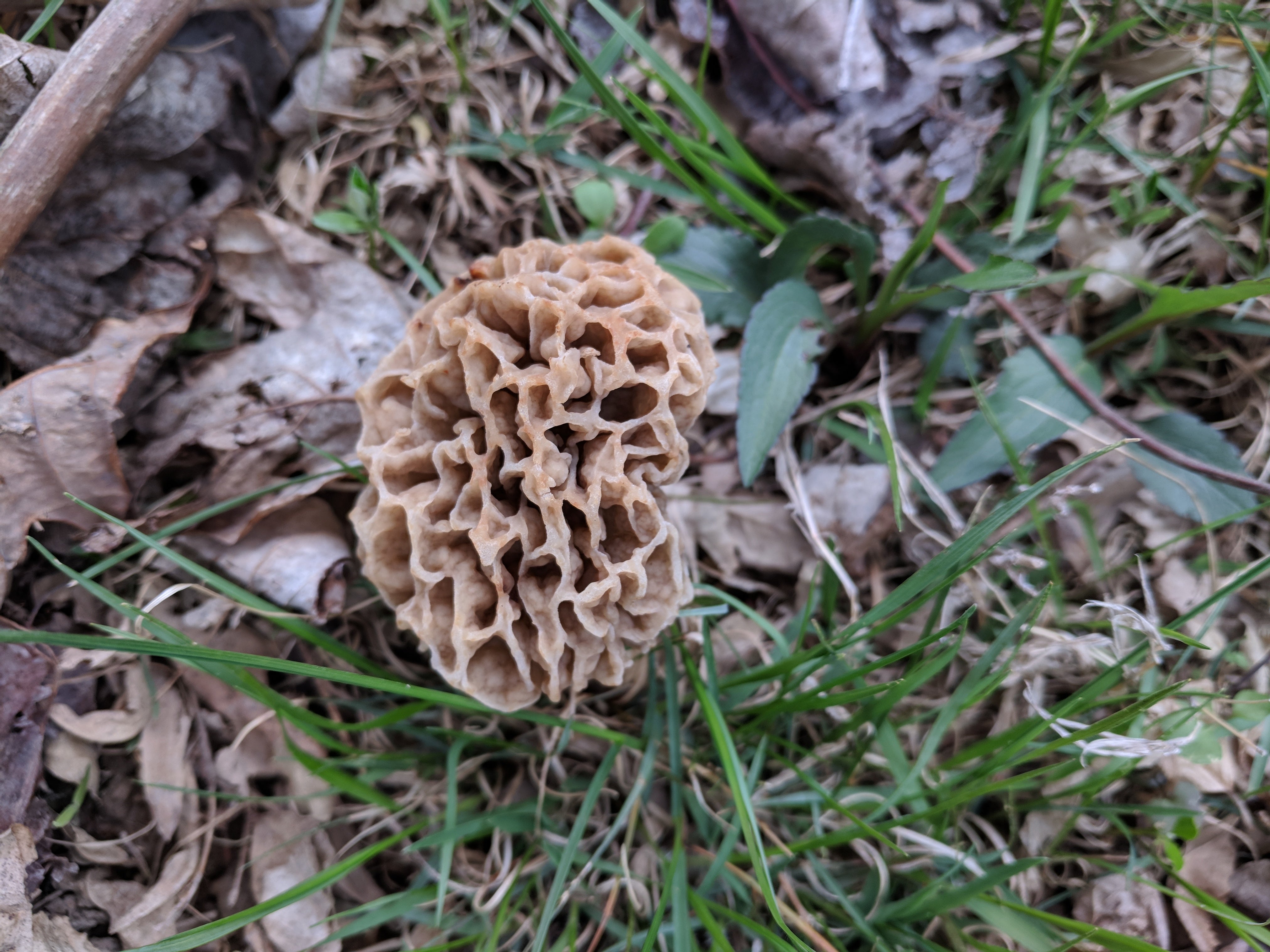
A wild morel mushroom at the base of a distressed fruit tree.
Many private landowners and foragers are even more protective of their foraging spots than anglers are of their favorite fishing holes. Moore described cleaning up signs of other foragers on the trail that might look like nothing more than trail trash.
An aluminum can next to a tree or dangling from a branch might seem like litter. But she recognizes them as markers left by foragers hoping to check a spot for fresh produce later. She recently told NPR about the cans, as well as the lengths she goes to protect her own privacy and foraging secrets. She even takes location tracking off her phone and photo metadata.
Sustainable Mushroom Hunting
It’s no wonder there’s such fierce competition and secrecy. Considering how much rare ingredients like morels, oyster, and hen of the woods mushrooms can fetch at market. There can be a real economic incentive for keeping your cache on the down low. Another motivation is ecological preservation.
Over-harvesting by inexperienced or greedy foragers is a real risk to edible roots and bulbs like ginger and ramps. Mushrooms, too, are vulnerable to over-picking. Responsible foraging practices and permission from private landowners are musts to keep delicate flora thriving.
Further complicating things for would-be foragers on public lands are rules about staying on-trail. Which can make it difficult or downright impossible to find the small pockets of, say, sorrel or chickweed. After all, you can’t expect plants to helpfully sprout up right in the middle of a well-worn, heavily trafficked trail.
The illusive nature of many of these plants means that mushroom hunting can be a long, painstaking activity — literally! Just before our expedition, Andrea Moore spent an hour tangled up in a thorny thicket trying to reach the mushrooms that are now in her basket.
Nature is good at protecting its bounty, so pack long sleeves before you head out. Don’t forget to check yourself for ticks once you’re back in the comfort of your own home or campsite.
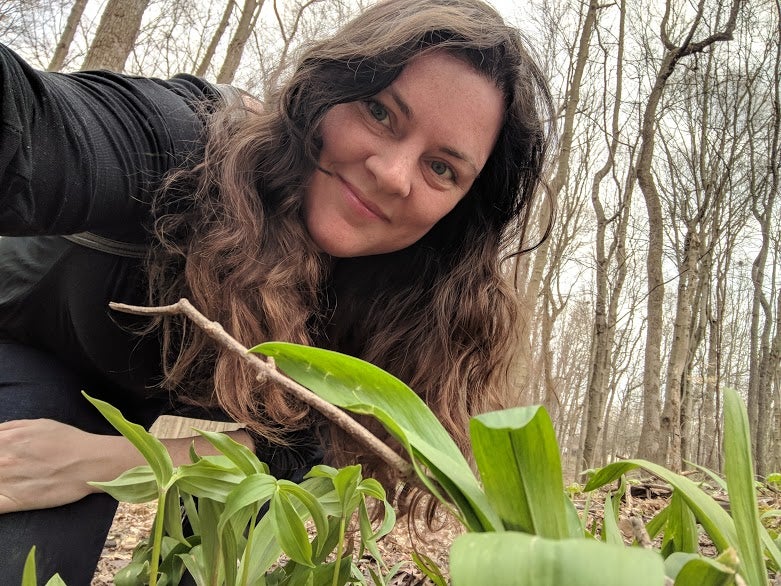
The author by a patch of wild ramps.
Seasonality
Timing is also important to foragers. Some plants are only in season for a few weeks each year, and just as spring is getting its start. Thanks to the late winter, ramp season is only just getting started in Appalachian Ohio.
Further west and north, the season tends to extend later into spring. This means you have even more time to get out and start searching.
If you’re unsure when and where to start mushroom hunting, ask your state’s Department of Natural Resources. They will be able to put you in touch with naturalists who are experts on local flora and fauna. They’ll refer you to foraging societies, mycology clubs, and other organizations you can learn from. Organizations like the Ohio Mushroom Society that Andrea Moore is a part of.
You can also consult this list of clubs affiliated with the North American Mycological Association to find one near you. Many are organized by state or region, but some cities have their own clubs, too, like the San Francisco Mycological Society. For even more resources, also look to colleges and universities who might have biologists and other experts on staff. Penn State even offers a whole degree in Mushroom Science and Technology.
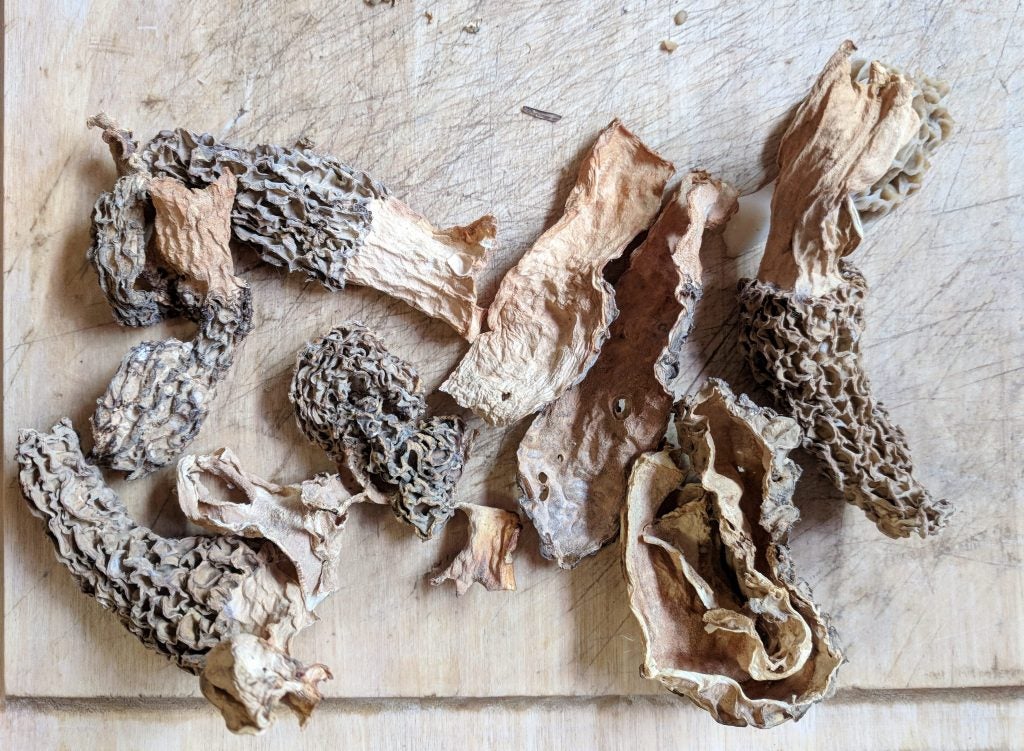
Dried morel mushrooms
Safety Precautions
It bears repeating, of course, that one must be very careful when foraging not to mistake something inedible or dangerous for something delicious. Books like Mushrooming Without Fear and Edible Wild Plants: A North American Field Guide can help alert you to the basics. But it can take years of practice to feel really confident about what you pick and eat.
It’s not just mushrooms you need to watch out for, either. Fiddlehead ferns are a wonderful spring delicacy, but you need to be quite sure you find the right type of fern. This can be tricky when you aren’t sure of the difference between Bracken fern or a Christmas fern or a Shield fern. Of the three, only the later has safely edible fiddleheads.
One way around the risk of eating the wrong thing is to forage for ingredients you can use in natural dyes. For example, turkey tail mushrooms, goldenrod, black walnuts, pokeweed, and hollyhock. That will also extend the number of seasons during which you can enjoy your new hobby.
As dye plants grow year round, while many edibles are only at their peak during the spring and summer. May Apples, for example, actually peak in June and July.
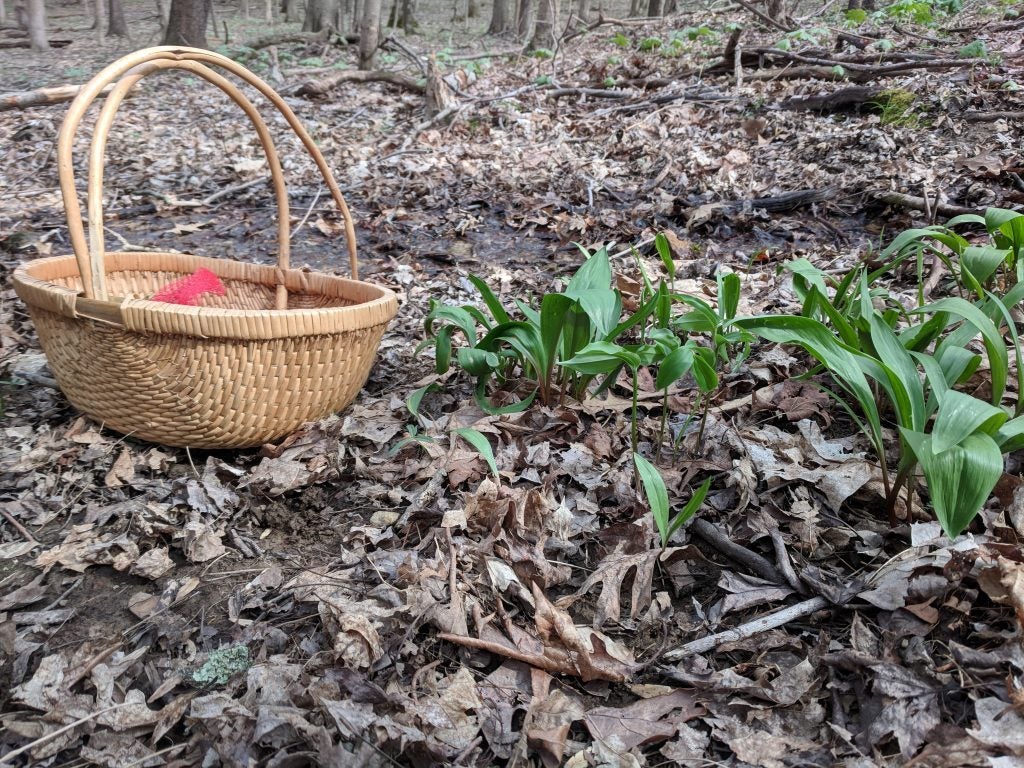
A foraging basket next to a patch of wild ramps.
When you get it right, though, the results can be delicious. Edible Cleveland has some wonderful foraging recipes that will give you ideas for what to do with your haul. So do cookbooks like The Wild Table, Tales from a Forager’s Kitchen, and Wild Cocktails From the Midnight Apothecary. If you want all the flavor without the risk, keep an eye out for local restaurants that feature foraged ingredients.
Dining Out for Foraged Ingredients
Foraged ingredients have been gaining popularity coast to coast, and are easier than ever to find in chefs’ kitchens. Lovely’s Fifty Fifty in Portland, Oregon, the Porter Beer Bar in Atlanta, New York City’s Aska, Lazy Bear in San Francisco, and Kindred Spirit in Logan, Ohio. These are just a few of the many restaurants serving up everything from edible lichen to brown butter fiddlehead ferns and wild violet salads.
Just by Googling “restaurants that use foraged ingredients” you can find something in your area. Some of the biggest restaurants hire professional foragers to source incredible ingredients like edible lichen. But small restaurants in lesser-known towns have connections, too.
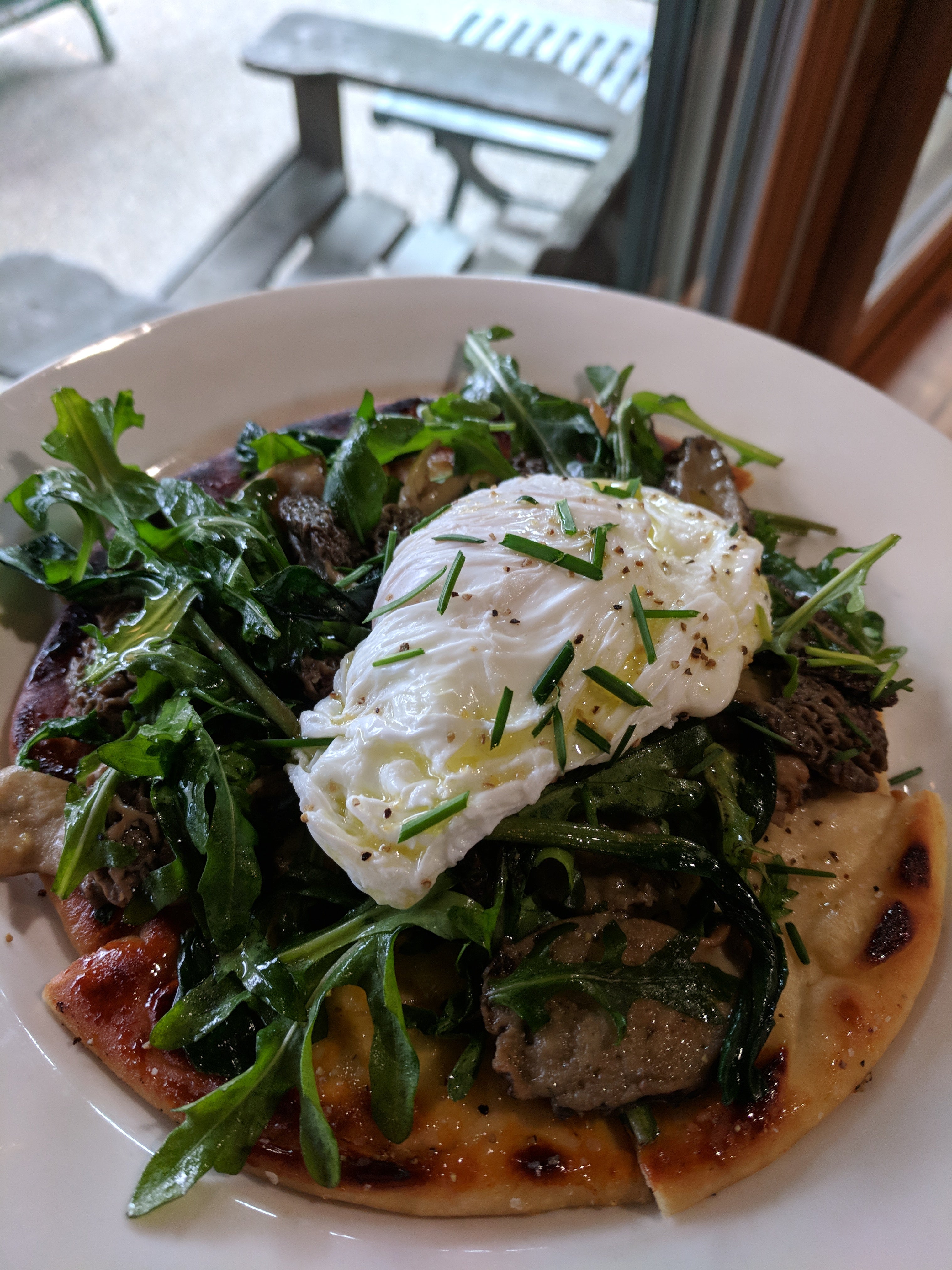
A honeyed flatbread topped with foraged morels, ramps, spring onions, and an egg at Kindred Spirit in Logan, Ohio.
What’s really special about foraging isn’t just the potent ingredients that end up on our plates. It’s the experience we have in looking for them. All too often we hurry through our hikes, forgetting to look closely at what’s around us.
Foraging slows you down and forces you to become more aware of your neck of the woods. It’s a practice made easier by patience and repetition, and an inevitable consequence is a growing intimacy with the land.
The Dyrt is the only camping app with all of the public and private campgrounds, RV parks, and free camping locations in the United States. Download now for iOS and Android.Popular Articles:
Articles on The Dyrt Magazine may contain links to affiliate websites. The Dyrt receives an affiliate commission for any purchases made by using such links at no additional cost to you the consumer.

